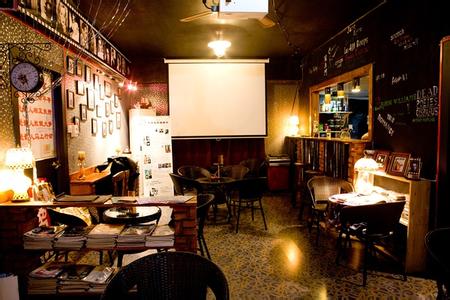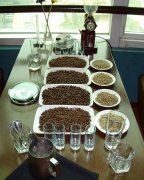How to evaluate coffee like a certified appraiser

The art of coffee cup testing:
1. A 5-to 6-ounce coffee cup is recommended. The cup should be kept clean and has no obvious smell.
two。 The chromaticity after baking should be light or medium light, preferably measured by a colorimeter. The sample should be baked within 24 hours before the cup test and then placed in a sealed container for at least 8 hours.
3. The coffee beans should be ground immediately before the cup test, not more than 15 minutes from the water injection. The particles should be slightly rough, and 70% to 75% of the particles can pass through the standard American No. 20 sieve. Before water injection, cup testers should evaluate the aroma of dry powder by sniffing.
4. Generally speaking, the brewing ratio is 8.25g coffee with 150ml water, and the error is controlled within 1/4 grams.
5. The brewing water must be clean and tasteless and should not be distilled or soft water (the ideal level for total soluble solids is 125to 175PPM). The water temperature should be 200 degrees Fahrenheit and the brewing time should be 3 to 5 minutes without any stirring.
6. After the dregs are soaked, the floating coffee powder will form a "skin" on the surface. Press the powder into the bottom of the cup with a special spoon, then stir gently to smell the wet aroma coming from the rising steam. The final aroma score of coffee is a combination of dry and wet aroma scores.
7. Cool the coffee to 160 degrees Fahrenheit, pick up and throw away the coffee grounds floating on the surface, sip loudly into your mouth, make the coffee liquid fully cover the whole mouth, and evaluate its taste and aftertaste. At about 150 degrees Fahrenheit, evaluate the acidity, mellowness and balance of coffee (that is, the combination of taste, aftertaste, acidity and mellowness). When coffee falls to room temperature, begin to assess its sweetness and evenness, as well as its clarity-whether there is a negative impression of coffee from entrance to spit. Add up all the scores and give the total score.
Important Notice :
前街咖啡 FrontStreet Coffee has moved to new addredd:
FrontStreet Coffee Address: 315,Donghua East Road,GuangZhou
Tel:020 38364473
- Prev

Al's Rule Sweet Point Formula of Espresso extraction
Al Critzer's understanding of Espresso extraction has become the most common concept of Espresso in Europe and the United States. The translation is as follows: starting with the result that 30cc/ 30sec gets a perfect Espresso. These two values of course depend on beans, and the differences in baking method, baking degree and formula ratio will naturally lead to changes in the reference point. The extraction quantity and extraction time are mutually related.
- Next

The significance of cupping coffee cup test in the basic knowledge of high-quality coffee
The significance of cup test is to evaluate and compare several different kinds of coffee at the same level. Because the differences between coffees are very subtle, observe the characteristics of these coffees (flavor, mellow, freshness.) It is easily affected by different coffee extraction methods (utensils). Because of the elimination of these variables, carefully prepared cup tests can taste the most basic inherent characteristics of coffee.
Related
- Beginners will see the "Coffee pull flower" guide!
- What is the difference between ice blog purified milk and ordinary milk coffee?
- Why is the Philippines the largest producer of crops in Liberia?
- For coffee extraction, should the fine powder be retained?
- How does extracted espresso fill pressed powder? How much strength does it take to press the powder?
- How to make jasmine cold extract coffee? Is the jasmine + latte good?
- Will this little toy really make the coffee taste better? How does Lily Drip affect coffee extraction?
- Will the action of slapping the filter cup also affect coffee extraction?
- What's the difference between powder-to-water ratio and powder-to-liquid ratio?
- What is the Ethiopian local species? What does it have to do with Heirloom native species?

